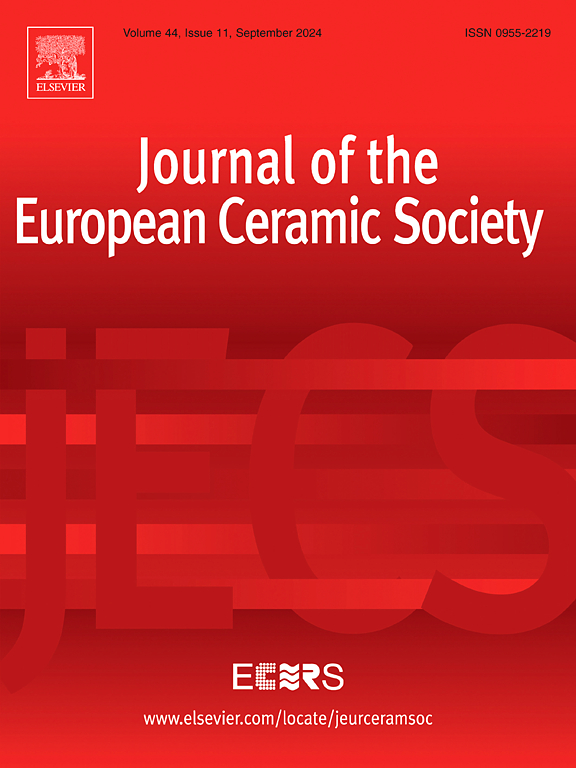Advanced vat photopolymerization of polymer-derived 70S30C glass-carbon nano-composites: Topological control and biological validation
IF 5.8
2区 材料科学
Q1 MATERIALS SCIENCE, CERAMICS
Journal of The European Ceramic Society
Pub Date : 2025-03-20
DOI:10.1016/j.jeurceramsoc.2025.117384
引用次数: 0
Abstract
This study explores the use of photocurable silicone/acrylate blends as feedstock for vat-photopolymerization to fabricate highly porous components with complex geometries, such as gyroid scaffolds. The inclusion of calcium nitrate tetrahydrate in nano-emulsion into the silicone-based liquid enables the transformation of polymer scaffolds into ceramic nanocomposites by heat treatment at 700 °C in a N2 atmosphere. These scaffolds are designed for bioengineering applications, featuring a matrix resembling 70S30C bioglass with pyrolytic carbon as a secondary phase. The homogeneity of the feedstock, essential for developing a glass matrix, does not automatically ensure tight control over topology and mechanical properties. However, by utilizing high-precision stereolithography and liquid feedstock-based emulsion inks, we achieved a strict match to the reference model porosity (85 vol%) for both printed and fired scaffolds, resulting in an impressive strength-to-density ratio. In vitro tests with multiple human cell lines confirm the biocompatibility and bioactivity of our materials. Furthermore, the enhanced photothermal effect attributable to increased infrared absorption of the dispersed carbon phase enhanced by infrared absorption, shows promising potential for inducing apoptosis in cancer cells, providing an exciting avenue for cancer treatment applications.
聚合物衍生的70S30C玻璃-碳纳米复合材料的先进还原光聚合:拓扑控制和生物验证
本研究探索了使用可光固化的有机硅/丙烯酸酯共混物作为光固化的原料,以制造具有复杂几何形状的高多孔部件,如陀螺支架。将纳米乳液中的四水合硝酸钙包合到硅基液体中,使聚合物支架在700°C N2气氛下热处理后转化为陶瓷纳米复合材料。这些支架是为生物工程应用而设计的,具有类似70S30C生物玻璃的基质,热解碳作为次级相。原料的均匀性对形成玻璃基体至关重要,但它不能自动确保对拓扑结构和机械性能的严格控制。然而,通过使用高精度立体光刻和基于液体原料的乳液油墨,我们实现了与印刷和燃烧支架的参考模型孔隙率(85 vol%)的严格匹配,从而获得了令人印象深刻的强度-密度比。多种人类细胞系的体外试验证实了我们的材料的生物相容性和生物活性。此外,由于红外吸收增强了分散碳相的红外吸收,光热效应增强,在诱导癌细胞凋亡方面显示出良好的潜力,为癌症治疗应用提供了令人兴奋的途径。
本文章由计算机程序翻译,如有差异,请以英文原文为准。
求助全文
约1分钟内获得全文
求助全文
来源期刊

Journal of The European Ceramic Society
工程技术-材料科学:硅酸盐
CiteScore
10.70
自引率
12.30%
发文量
863
审稿时长
35 days
期刊介绍:
The Journal of the European Ceramic Society publishes the results of original research and reviews relating to ceramic materials. Papers of either an experimental or theoretical character will be welcomed on a fully international basis. The emphasis is on novel generic science concerning the relationships between processing, microstructure and properties of polycrystalline ceramics consolidated at high temperature. Papers may relate to any of the conventional categories of ceramic: structural, functional, traditional or composite. The central objective is to sustain a high standard of research quality by means of appropriate reviewing procedures.
 求助内容:
求助内容: 应助结果提醒方式:
应助结果提醒方式:


